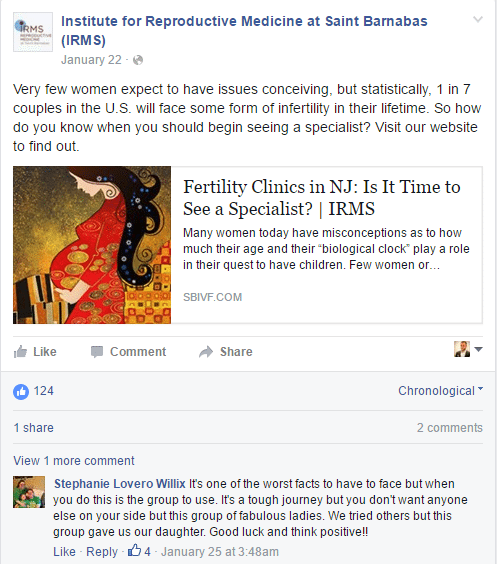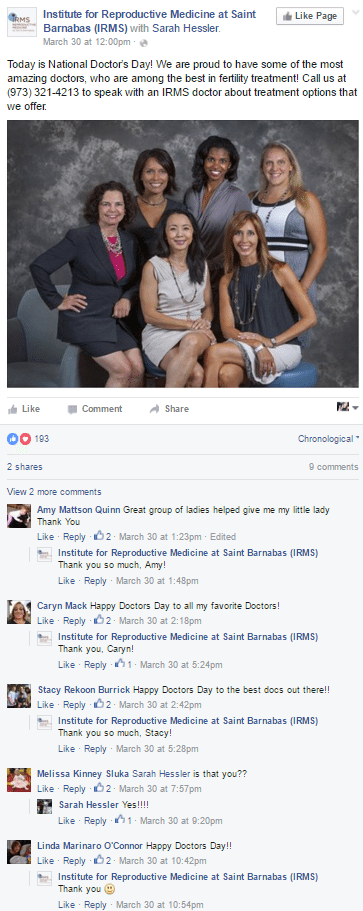Executive Summary:
The following case study focuses on how Today’s Business’ social media marketing services were utilized in educating the patients of Institute of Reproductive Medicine and Science (IRMS) at Saint Barnabas in Livingston, NJ. At the same time, this campaign worked on extending the doctor/patient relationship beyond the office setting. All statistics are from over the course of three months of the campaign:
- 81% of the traffic driven from social media consists of users new to visiting the website
- 16% of social media traffic converts into a contact form
- Social media traffic on average spends the most amount of time on site, as compared to other paid media channels

Challenges:
The primary challenge was to assess the utility of social media platforms for engaging with patients undergoing or seeking reproductive treatment.
For IRMS, a successful social media strategy is one that benefits their patients. Marketing is a form of communication; you need to communicate with your patients in order to provide them with the best possible care. Social media marketing is effective in doing just that.
By incorporating educational information into social media posts, IRMS would benefit by having more knowledgeable patients in the office, asking educated questions.
How Our Services Helped:
The following are examples of educational Facebook posts from the campaign that illustrate the strategy and show patient engagement:

Results and ROI:
Overall, IRMS saw increased exposure at a decreased cost for practice. Traffic driven from social media consisted of 81% of new users to the website and 16% of that traffic coverts into a contact form. Facebook was responsible for a higher volume of traffic at a lower cost. Facebook lead ads significantly outperformed link ads, driving 28x more registrations at a cost 14x more efficient than link ads, and 3x more efficient than the client’s cost-per-lead goal.
The dual Facebook ads (website clicks and post engagement) drove the campaign cost-per-link click down 78% and increased offsite click volume by 140%. Users of the website from social media spend over 4 minutes on the website with 4 page views per session, which is double from any other channel.
Education for patients extended the patient/doctor line of communication beyond the office setting and increased a sense of trust in the relationship. This personal touch creates better communication with patients which in turn, results in better care.




.svg)